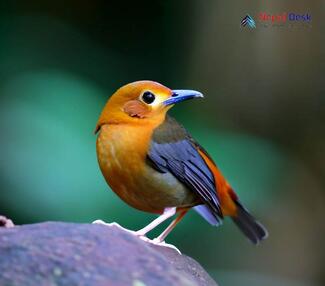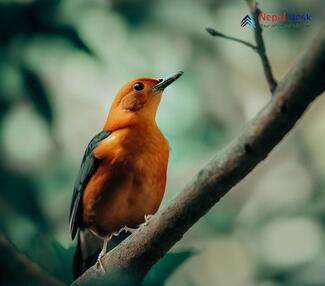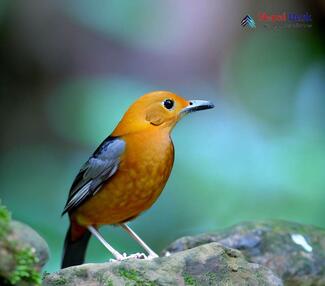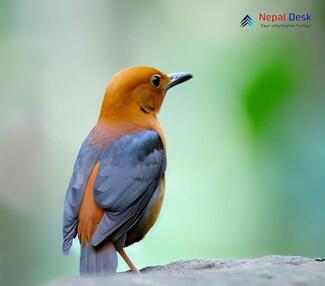The orange-headed thrush (Zoothera citrina) is a captivating bird species known for its vibrant plumage and melodic songs. This medium-sized bird, adorned with an orange head and underparts contrasting with its olive-brown wings, is sure to leave a lasting impression on any birdwatcher. In this article, we will explore some interesting facts about the orange-headed thrush and discuss its presence in Nepal.
Orange-headed Thrush: An Overview
Belonging to the family Turdidae, the orange-headed thrush is widely distributed across various parts of South Asia, including India, Bangladesh, Bhutan, China, Myanmar, and Nepal. It predominantly inhabits dense undergrowth in moist deciduous forests or well-wooded areas.
These birds are skilled insectivores and primarily feed on insects found on the ground or lower branches of trees. Their diet also includes fruits and small invertebrates such as snails and earthworms.
One of the most striking features of these birds is their enchanting singing ability. Males perform melodic songs consisting of a series of repetitive phrases to attract females or establish their territory. The prime breeding period for orange-headed thrushes falls between April to June.
Presence in Nepal: Habitat and Status
In Nepal, the orange-headed thrush can be found residing at altitudes between 75m to 2,130m above sea level. Although it doesn't inhabit tropical evergreen forests like its relatives, it does prefer subtropical forests where moisture levels are high.
While not considered endangered globally by the IUCN Red List criteria, their population trend is still decreasing due to habitat loss and human activity. The growth of urbanization in Nepal adversely impacts these birds' habitats, making it harder to find suitable areas for nesting and foraging. In response, conservation efforts have been introduced to create awareness and preserve the species habitat.
Birdwatching Opportunities in Nepal
Nepal, being home to over 800 bird species, is a paradise for birdwatchers and nature enthusiasts. The country's diverse landscapes and impressive biodiversity provide ample opportunities to spot rare and unique birds like the orange-headed thrush. Some popular birdwatching locations include Shivapuri Nagarjun National Park near Kathmandu, Bardia National Park, Pokhara Valley, and Chitwan National Park.
In Conclusion
The orange-headed thrush (Zoothera citrina) is a remarkable species loved by many in Nepal for its striking beauty and captivating songs. The bird's presence highlights Nepal's rich biodiversity and emphasizes the importance of preserving natural habitats for generations to come. By promoting conservation efforts and responsible tourism, we can help ensure that these colorful jewels continue to thrive amidst the verdant forests of Nepal.




